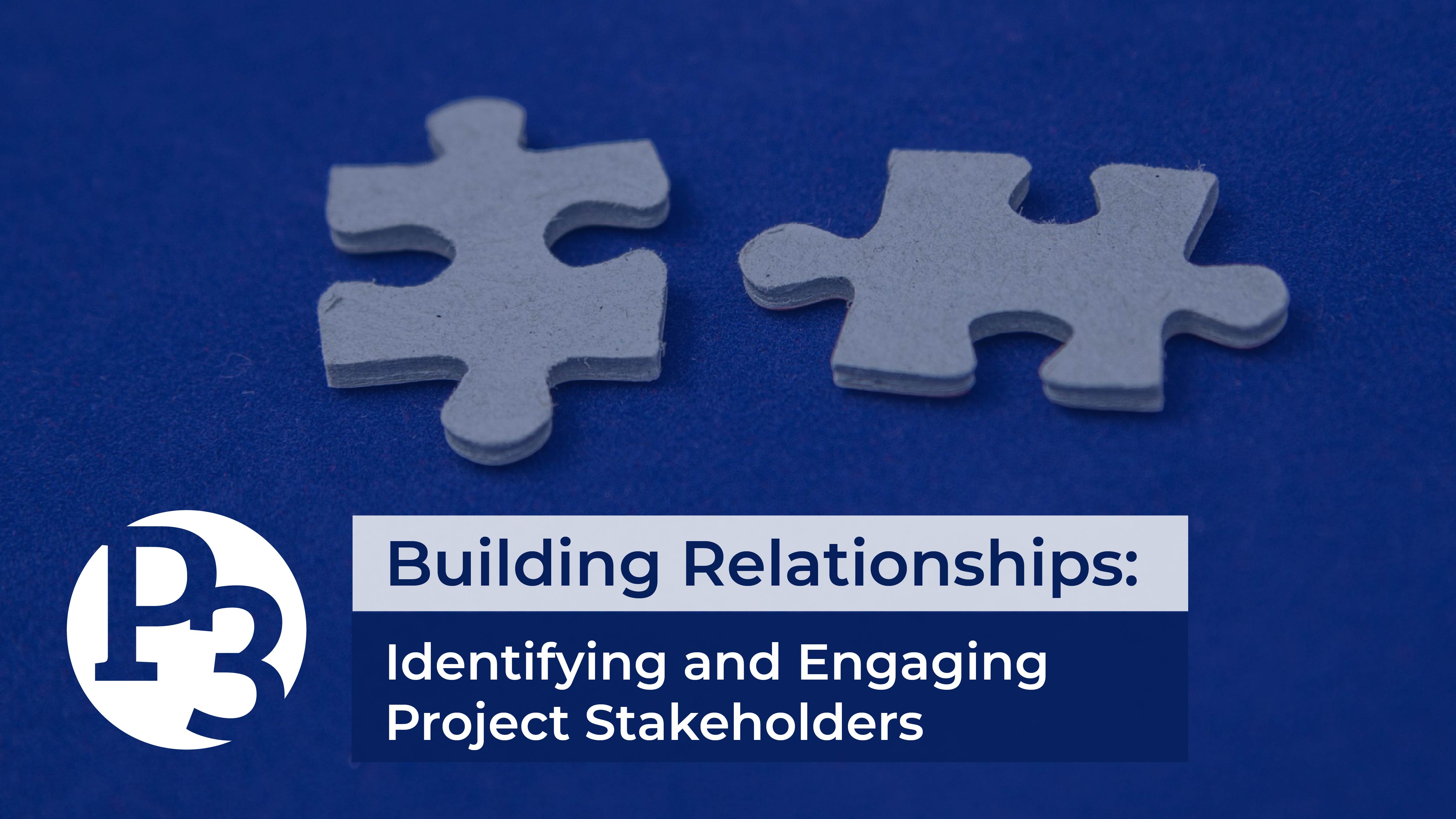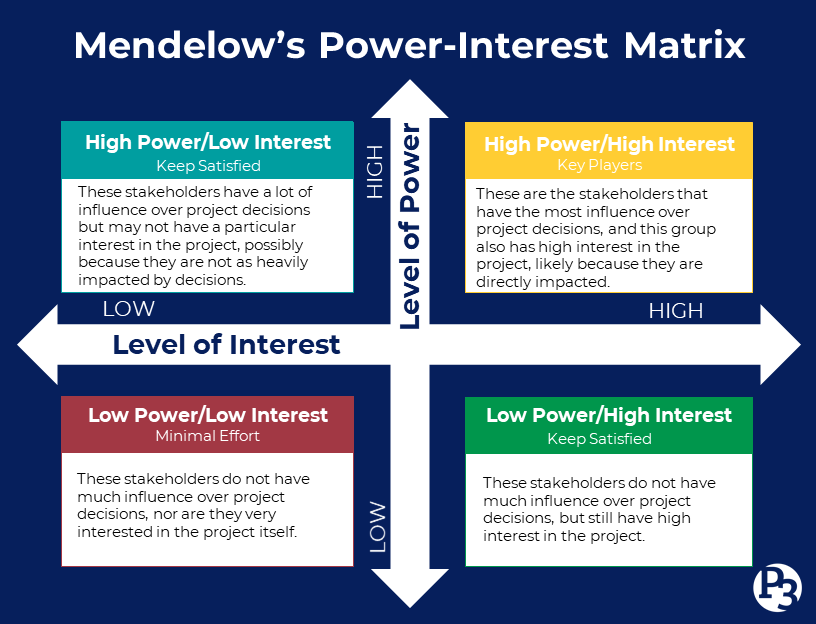
30 Sep Building Relationships: Identifying and Engaging Project Stakeholders
Public engagement is the foundation for decision-making that incorporates the ideas and perspectives of the public. But how do you know who to reach out to? Creating a stakeholder list is one of the key steps in getting started with public engagement.
There are three types of stakeholders: primary, secondary, and tertiary.
- Primary stakeholders are directly impacted by a project or decision.
- Secondary stakeholders are indirectly impacted by a project or decision.
- Tertiary stakeholders are not directly or indirectly impacted by a project or decision, but they may have an interest in the project.
A majority of engagement efforts should be concentrated on those that are impacted by a project, as they should be the most involved in the process. However, all stakeholders within a study area should be contacted if possible and an agency should make reasonable efforts to gain as much representative data for the study area as possible.
Conscious effort in grouping and considering stakeholders is important to make sure outreach is as effective as possible. Without stakeholders to reach out to, and without reaching them effectively, your project could potentially lack both quality and quantity of data, and decisions will not represent the preferences of the community.
Here are some other tips for stakeholder outreach and analysis to consider in your next project!
Identify key groups in your study area.
Stakeholder groups may vary based on the study area, but common groups include: property owners, businesses, government agencies, elected officials, interest groups, minority groups, faith-based organizations, schools, renters, youth, seniors, and more. At least some of these stakeholder groups will be present in almost every study area, and knowing the members of these groups is a good place to start in stakeholder outreach.
Consider:
- Are there specific communities that will be impacted by the project?
- Who will be most interested in the project?
- Are there groups or organizations already organized in the area?
- Which groups of people have historically not been represented in these types of projects or in the study area?
Create a defined outreach plan.
Once you have identified key stakeholder groups and members of those groups, it’s important to incorporate them into your outreach plan. Different groups will require differing levels of communication and effort, so it is important to create a plan on how to reach certain groups.
A good tool to use when determining how to allot engagement efforts is Mendelow’s Power-Interest Matrix. This matrix groups stakeholders based on the power/influence they have over decisions as well as interest they may have in the project.

Use this matrix to sort your stakeholders into the four categories. This will help you plan your outreach based on their level of impact and interest. It’s important to remember that stakeholders can move between these groups and just because stakeholders may have lower impact or interest does not mean outreach is not important to them. However, this tool shows where the most effort should be concentrated and allows you to formulate an outreach plan based on this grouping.
Using this assessment of stakeholders, one can prepare an outreach and engagement plan using various meeting and communication methods to effectively engage these stakeholders. Create a plan and then modify it along the way if stakeholder needs change or you find that certain methods are not working effectively.
Reach out to ambassadors for stakeholder groups.
Some groups may be hard to contact fully due to size or communication barriers, so it’s important to conduct outreach to “ambassadors” or representatives for these groups to assist with distributing materials or to spread the word. Look for these ambassadors as community leaders, gatekeepers, and community organizations that have standing relationships within a community. They’re often found in church or faith-based organizations, homeowner associations, resident groups, local organizations, non-profits, schools, and senior, service, cultural, or parent groups in the area. Building a relationship with these representatives will assist with reaching a larger group.
Ask current contacts for outreach suggestions.
You may already have an established relationship with some stakeholders in a community, either through current projects or previous work. It’s a good idea to ask these stakeholders if they have any suggestions of other groups in the study area to reach out to. These groups may know additional contacts that would be interested in or impacted by a project that you did not know of.
Further, you can also ask current stakeholder contacts about the best method for outreach for their group and other similar groups. As you add more stakeholders to your list, make an effort to get in touch with them and ask about meeting and communication preferences. Instead of playing a guessing game for which method will work best for certain groups, ask the group which methods they prefer. This not only shows that you value that stakeholder group’s input by asking their preferences, but also allows you to reach them more effectively throughout the project.
Use varying outreach methods for various groups.
As you can see in Mendelow’s Matrix, different stakeholder groups will have different levels of impact and interest within a project. Thus, they will require different methods of engagement and different levels of effort in contacting them. Engagement is not a one-size-fits-all, and outreach must be tailored to different groups to be most effective. While one meeting type or communication method may be effective for one group, it may not effectively reach another. Therefore, one must adapt their approach depending on the group being contacted.
This step will require some initial analysis of stakeholder interest and impact, but it will also require analysis along the way. Conducting an engagement analysis of methods throughout phases of a project will show their effectiveness as well as which groups were not represented in the data. After this analysis, you can change methods to work on making sure all groups are reached.
Remember that you are building lasting relationships with these groups.
One should not reach out to stakeholders simply to get input from them for a project, but rather should work towards building a lasting relationship with these groups. This should be a mutually beneficial relationship, in which the agency continuously informs, involves, and empowers these stakeholder groups. Remain in contact with these groups and continue to build long-term relationships.
Stakeholder engagement is a crucial part of the public participation process, and it’s important to engage stakeholders effectively, especially those that are impacted by and interested in the project. These tips are not a complete guideline for stakeholder engagement and analysis, but they do provide a foundation for establishing an engagement plan and effectively reaching stakeholders in a study area.
Are there any tips we missed? Let us know in the comments below!
TL;DR
Want to be notified when we release a new blog post? Subscribe here! And don’t forget to follow us on Facebook and LinkedIn!
About the Author: Katie Maynard started her journey with Public Participation Partners as a Community Engagement Assistant in January 2020. When not assisting with public involvement, Katie enjoys reading, travelling to the beach, and spending time with her pets.


Sorry, the comment form is closed at this time.